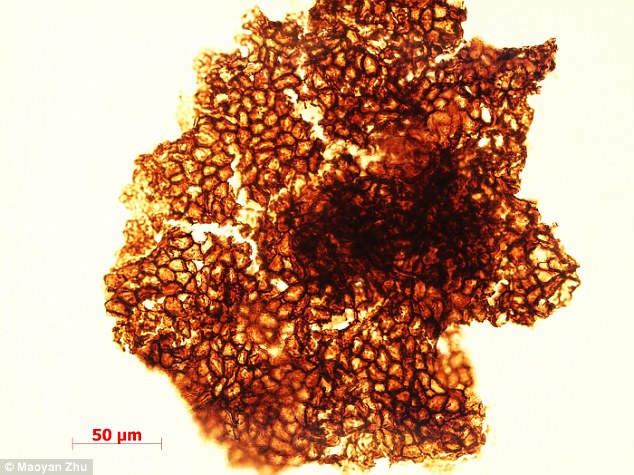17 May 2016, By RUSS SWAN FOR MAILONLINE

Palaeontologists from China have described their discovery of what might be the oldest multicellular life on Earth.
A large number of fossils have been recovered from mudstone deposits known as the Gaoyuzhuang formation, dated to 1.56 billion years old.
Measuring up to 11 inches (30cm) long and three inches (8cm) wide, these 'macroscopic eukaryotes' - relatively large multi-cellular organisms - have been found in four distinct shapes.
The discovery shows that complex evolution had already taken place a billion years before the Cambrian Explosion – the time 542 million years ago when most plants and animals first appeared.
The researchers were led by Shixing Zhu of the Tianjin Institute of Geology and Mineral Resources, and found 167 individual fossils with dimensions greater than 15x3mm from fossil beds in northern China.
These were mainly in four different elongated shapes, including linear with parallel sides, cuneate (tapered on one end), oblong, and tongue-shaped.
The researchers note that the linear and cuneate fossils may be different parts of the same organism, but are confident that the tongue-shaped fossils are unique.
These show evidence of a holdfast – an anchor point where it would be held to the rock in the warm shallow Mesoproterozoic seas.
The researchers note that this also provides circumstantial evidence for at least limited cell differentiation – another key stage of evolution.
The variety of long shapes is significant because it means these were not merely mats of algae, but in fact resembled the plants that evolved much later in the Earth's history.
In other words, as Professor Zhu said: 'They indicate that simple macroscopic multicellularity evolved early in the eukaryotic domain.'
Perhaps the most startling conclusion from the research is that these organisms probably used photosynthesis.
'On the basis of the comparisons with modern organisms, the thalli were most likely photosynthetic, although one can imagine a possible osmotrophic alternative', said Professor Zhu.
The years before the Cambrian Explosion are sometime referred to by evolutionary scientists as the 'boring billion'.
But Zhu said this is a misleading caricature, and this very early, low-oxygen world demands much further investigation.
WHAT IS EUKARYOTIC LIFE?
Every complex organism living on the Earth is made of eurkaryotic cells from plants to animals and even fungi.
These cells have genetic material that is bound within a membrane along with other organelles such as mitochondria or chloroplasts.
They are thought to have first emerged on Earth when prokaryotic cells such as bacteria began incorporating other cells into them.
They were thought to have first emerged between 1.6 billion and 2.1 billion years ago but may not have started forming complex organisms until much later.
From: http://www.dailymail.co.uk/sciencetech/article-3595043/Is-world-s-multicellular-life-Complex-organisms-emerged-Earth-billion-years-earlier-previously-believed.html?ITO=1490&ns_mchannel=rss&ns_campaign=1490
